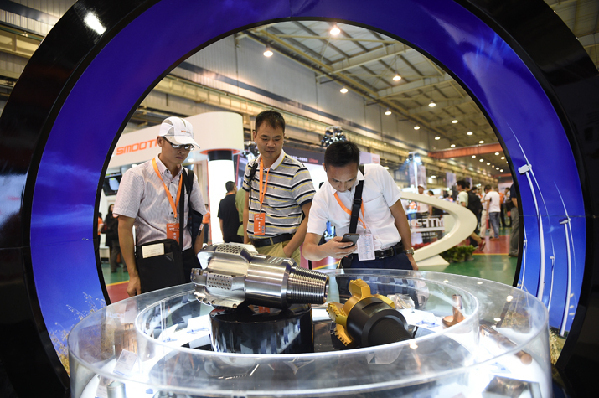China's structural reforms prevail, despite tough global landscape
- By Dan Steinbock
 0 Comment(s)
0 Comment(s) Print
Print E-mail China.org.cn, March 11, 2016
E-mail China.org.cn, March 11, 2016
|
A hi-tech enterprise based in Yinchuan, northwest China's Ningxia Hui Autonomous Region displays products made by robots on July 10, 2015 (XINHUA) |
During the on-going "Two Sessions" - the annual plenary meetings of China's top legislative and consultative bodies - international spotlight focused on the 13th Five Year Plan, poverty alleviation and the charity law, the rule of law, the Belt and Road initiative, green development, and the anti-corruption struggle.
From the standpoint of the market economy, the structural reforms play the most critical role in China's transformation, however.
Structural reforms against the new normal
In the past few years, President Xi Jinping's priority agenda - the "Four Comprehensives" - has become the grand blueprint of China's new five year plan. The most critical tenet of the agenda stresses the task of building a "moderately prosperous society." The second task is to "deepen reform" which requires reducing government's role by increasing market power. The third priority is the "rule of law" and the fourth stresses strict party discipline.
Deeper reforms are vital to achieve the rebalancing of the Chinese economy toward consumption and innovation. The challenge is to implement those reforms amid the "new normal," the most challenging world economy since the 1930s.
Nevertheless, at the 2015 Central Economic Work Conference, the policy authorities pledged to focus increasingly on supply-side reforms, which prioritized the reduction of excess capacity, while maintaining stability.
In the coming months, that will mean expanded fiscal spending, further monetary easing and broad restructuring - as evidenced by the Two Sessions.
Balancing between growth and reforms
In 2015, China's economy grew by 6.9 percent. The deceleration of growth signals the eclipse of industrialization in the mainland's relatively wealthier provinces. Moreover, slower growth is vital to double Chinese living standards by 2020. That's what Premier Li Keqiang underscored when he stated that China will not abandon its ambitions for growth, although it will not pursue GDP single-mindedly.
Beijing's objective is not sheer growth for growth. Rather, growth is seen as an instrument to raise living standards.
Despite shifts in the budget, reform priorities prevail. China budgeted a fiscal deficit of 3 percent of gross domestic product (GDP) for 2016 from 2.4 percent in 2015, to support a "reasonable range" of growth. At the same time, China hopes to maintain social expenditure and infrastructure investment, including increasing the length of high-speed railways to 30,000 km, linking more than 80 percent of big cities nationwide, and achieving full coverage for broadband networks in both urban and rural areas.






